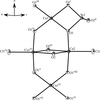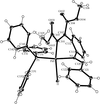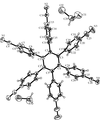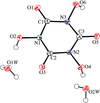issue contents
January 2007 issue

Cover illustration: Part of the crystal structure of ethyl 5-amino-1-(4-chlorophenyl)-1H-imidazole-4-carboxylate, showing the formation of a hydrogen-bonded chain along [001]. For the sake of clarity, H atoms not involved in the motifs shown have been omitted and only one orientation of the disordered ethyl group is shown. See Costa, Boechat, Wardell, Ferreira, Low & Glidewell [Acta Cryst. (2007), C63, o33-o37].
inorganic compounds








metal-organic compounds






 access
access











 access
access

organic compounds






 access
access







 access
access

 access
access

 access
access

 access
access

 access
access

 access
access















 access
access



 journal menu
journal menu




















































